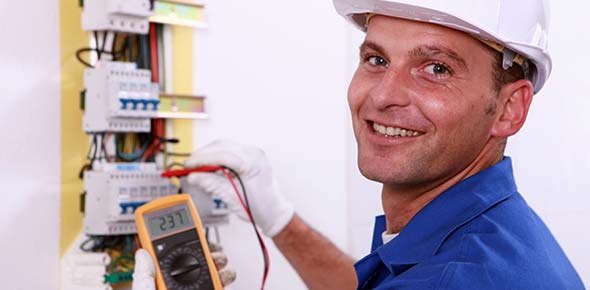The number of poles and rotor speed determine the ____ of an...
A transformer in which the primary and secondary are phsically...
Magnets are surrounded by fields that exit the ____ pole and enter the...
In the modern world, most power is generated by ____ machines.
A transformer in which the secondary voltage is less than the...
The magnetically operated device that can change values of voltage,...
In an isolation transformer, all windings will have the same number of...
A wye-delta transformer has its____ connected as a wye and its...
The transformer winding which is the output winding is called the
When a current passes through a conductor, a _____ field is produced...
In a transformr, the turns of the primary wire compared to the turns...
The U.S. consumes ____ % of the world's power.
Moving a conductor through a magnetic field induces a ____ and a ____...
List some of the test instruments that a technician may use to check a...
In a transformer, even when no load is connected, there is a small...
The ____ controls the output voltage of an alternator.
The basis for understanding magnetic principles is the ____ theory of...
A delta-wye transformer has its____ connected as a delta and its...
Mutual induction is the process of ____ a current in a conductor, as...
A transformer supplying a house with 120 / 240 volts has a secondary...
Three naturally magnetic metals are ____, ____, and ____.
Direct current flowing through a coil will produce a magnetic field...
When using an open delta with a center tapped transformer, on...
When atoms in magnetic materials become ions, magnetic regions called...
When single phase loads are tied to a three phase transformer, the...
A transformer that does not isolate the output from the input is...
An open delta connection is made using ____ single-phase transformers.
____ and ____ are found in AC equipment.
Using a voltmeter, check not only for ____ voltage, but also for ____...
A transformer tape wound core is assembled by
If a single phase motor fails to start and makes a substantial hum,...
A transformer has a 240v primary and a 60v secondary. With a 5...
In selecting the overloads, the correct procedure involves determining...
When installing offset drives, three types of alignments are...
Three requirements for induction are a ____, a ____, and ____.
A transformer has a 240v primary and a 120v secondary. With...
When connecting three transformers for three phase use with the delta...
Some ambient conditions that are worthy of consideration are ____,...
The industrial use transformer that normally has 240v or 480v primary...
In an open delta with single phase loads, the high leg must be...
Steam turbines are powered by energy types like ____, ____, ____,...
Define inductance.
What do DC motors have a that AC motors do not? ____, ____, ____,...
The first step in any motor intallation should be to ____.
Four effects that can demagnetize a magnet are ____, ____, ____, and...
















